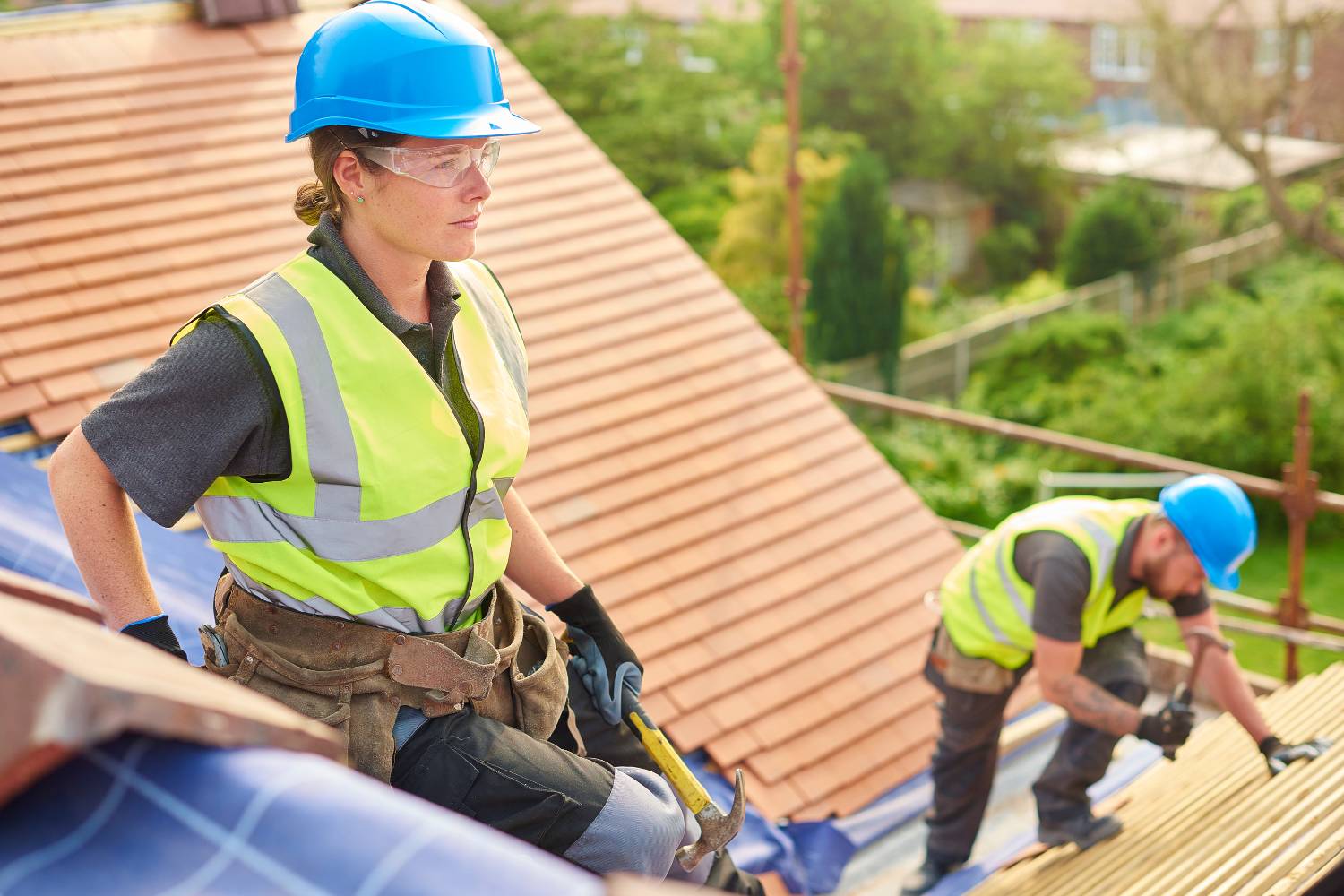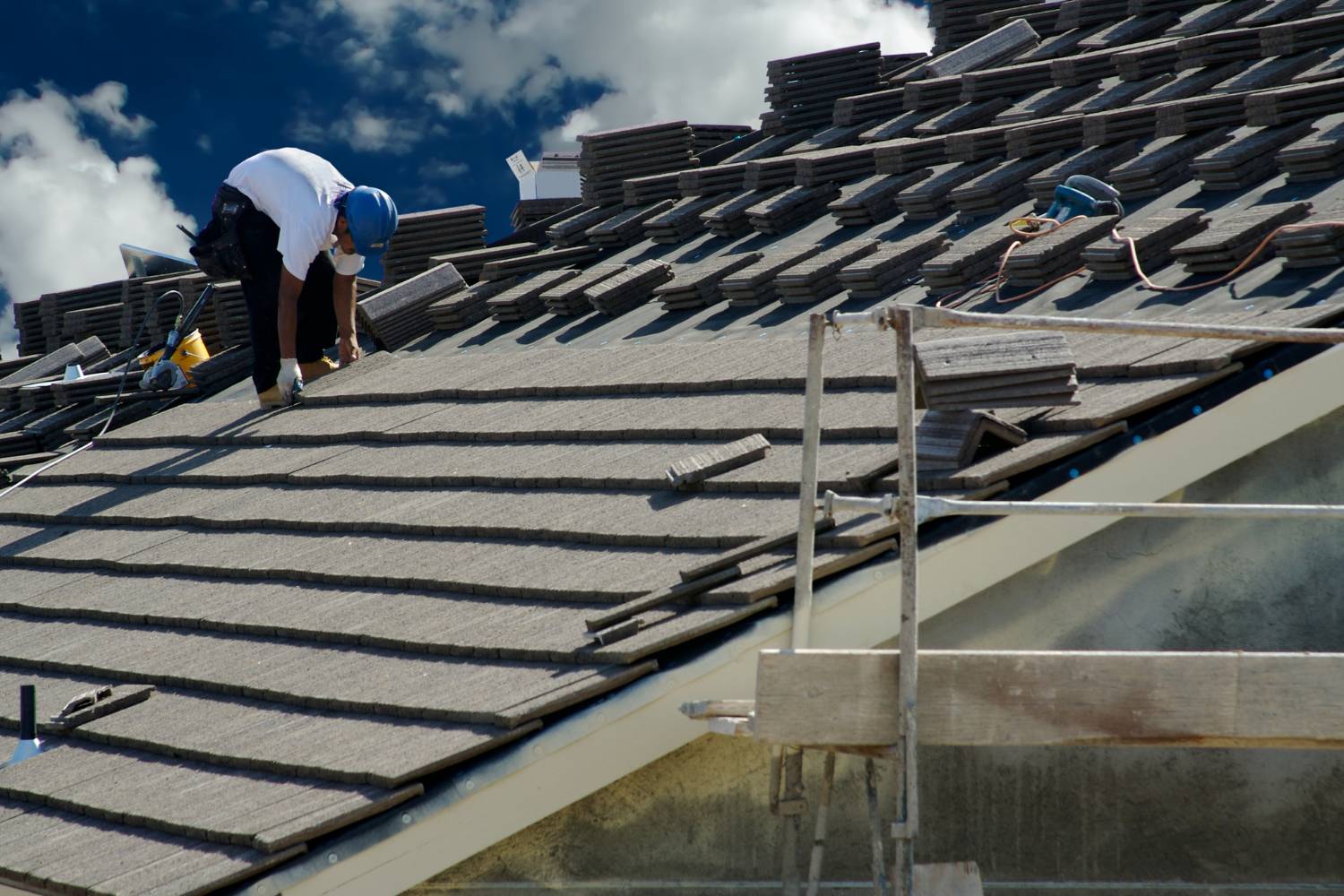Roof restoration is undergoing a significant transformation, driven by a wave of technological advancements and innovative materials. This evolution not only enhances the functionality and durability of roofs but also aligns with modern sustainability and energy efficiency goals.
In this blog, we delve into the cutting-edge trends and innovations that are shaping the future of roof restoration. From solar roofing systems to smart technologies, discover the latest advancements that are revolutionising the industry and offering homeowners new ways to improve and protect their homes.
Join us as we explore how these innovations are making roofs more resilient, efficient, and environmentally friendly.
What Are the Latest Technological Advancements In Roof Restoration?
Roof restoration is a crucial aspect of home maintenance, with significant technological advancements transforming the industry. These innovations enhance energy efficiency, durability, and aesthetic appeal, providing homeowners with a range of options to improve their roofs. Here are some of the latest technological advancements in roof restoration.
Solar Roofing Integration
Solar roofing systems, including solar panels and solar shingles, harness the power of the sun to generate electricity, reducing energy bills and contributing to a sustainable future. These systems seamlessly blend into the roof design, maintaining the aesthetic appeal while providing the benefits of solar energy. This integration not only promotes green living but also results in long-term cost savings.
Cool Roofing Technologies
Cool roofing materials are designed to reflect more sunlight and absorb less heat, keeping homes cooler during hot weather. This reduces the reliance on air conditioning, leading to significant energy savings. Materials such as reflective coatings and specialised tiles enhance the energy efficiency of buildings, contributing to a more comfortable living environment and lower utility bills.
Green Roofing
Green roofs incorporate living vegetation, which provides natural insulation and promotes biodiversity. This environmentally friendly approach reduces carbon footprints and improves air quality. Green roofs also enhance the visual appeal of homes, creating sustainable, eco-friendly environments that contribute to a healthier ecosystem.
Smart Roofing Solutions
Smart roofs are equipped with advanced sensors and technology to monitor various aspects of the roof's condition. These systems can detect leaks, adjust ventilation based on weather conditions, and provide proactive maintenance alerts. By ensuring optimal performance and preventing potential issues before they become serious, smart roofing solutions offer homeowners peace of mind and long-term savings on repair costs.
Durable And Impact-Resistant Materials
Advancements in material science have led to the development of highly durable and impact-resistant roofing materials. New materials, such as polymer-modified asphalt shingles, are designed to withstand severe weather conditions, including hail and strong winds. These durable materials extend the lifespan of roofs, reducing the need for frequent repairs and enhancing overall protection.
3D Printing In Roofing
3D printing technology is being used to create roofing components, offering flexibility, speed, and minimal waste. This innovative manufacturing process allows for the creation of customised roofing solutions. Although building codes have yet to fully accommodate this technology, it holds promise for efficient and personalised roofing systems in the future.
Robotics In Roofing
The use of robotics in roofing enhances efficiency, safety, and accuracy on job sites. Robotic shingle installers and inspection robots are becoming more common, reducing the need for human labour in dangerous or hard-to-access areas. While these robots still require human oversight, they represent a significant step towards greater automation and efficiency in the roofing industry.
Self-Healing And Self-Cleaning Roofs
Self-healing shingles, made from thermoplastics, can repair minor scratches and damage when heated by the sun. This innovative material allows shingles to maintain their durability and longevity. Additionally, new coatings for roofs make them self-cleaning by repelling water and dirt, reducing the need for regular maintenance and keeping roofs in optimal condition.
Advanced Solar Shingles And Panels
Advanced solar shingles offer the benefits of traditional solar panels while preserving the traditional look of the roof. These shingles use photovoltaic technology to convert sunlight into electricity, providing greater energy efficiency and protection from the elements. For homeowners who want to generate their own power without compromising the appearance of their roof, solar shingles are an ideal solution.
What Are The Emerging Trends In Roofing Materials?
The roofing industry is witnessing a dynamic transformation driven by sustainability, technological advancements, and innovative design. Here, we explore the latest trends in roofing materials, highlighting their impact on construction practices and architectural aesthetics.
Green Roofing Materials
Green roofs are designed to support vegetation and contribute to urban sustainability. They consist of multiple layers, each serving a distinct function. The base layer comprises a waterproof membrane that prevents water infiltration from the layers above.
Above this, an anti-root barrier prevents aggressive vegetative roots from penetrating. The protective layer, often made from a combination of geogrids, geotextiles, and polystyrene, maintains structural integrity and supports the weight of the overlying layers.
Efficient drainage and ventilation are achieved through various granular materials, such as pozzolana, pumice, clay, and crushed bricks. Innovative modular panels crafted from high-strength synthetic or plastic materials provide effective water storage and drainage capabilities.
The filter layer, constructed from materials with high water permeability, prevents clogging from small soil particles and vegetation debris. The substrate, a pivotal layer for vegetation support, comprises lightweight materials like pumice and perlite blended with inorganic materials such as scoria, vermiculite, and crushed brick, ensuring optimal substrate performance and robust vegetation growth.
Green roofing materials offer several advantages, including enhanced thermal insulation and energy efficiency, contributing to cooler urban microclimates by partially blocking solar radiation and promoting evapotranspiration. They improve urban hydrology by reducing runoff and filtering water, alleviating strain on water treatment facilities.
Additionally, green roofs provide recreational spaces, elevate urban aesthetics, improve mental well-being, and mitigate sound pollution through substrate-based sound absorption. They also serve as natural air purifiers, absorbing emissions, increasing oxygen production, and supporting urban biodiversity.
Sustainable Roofing Materials
As environmental consciousness grows, sustainable roofing materials are gaining traction, focusing on recyclability, longevity, and energy efficiency. Aluminium roofing stands out for its strength, recyclability, and energy efficiency. The reflective properties of aluminium reduce cooling costs and energy demand by minimising heat absorption. Other sustainable options include eco-friendly shingles and metal roofing made from recycled content or renewable resources.
The key benefits of sustainable roofing materials include a reduced environmental impact, lower maintenance, and longer lifespan, as well as improved building energy efficiency. These materials contribute to creating a greener, more sustainable built environment.
Smart Roofing Systems
The integration of technology into roofing systems is transforming roofs from mere shelters into active elements of home energy management. Solar roofing integration, where solar panels and shingles blend seamlessly with traditional roofing materials, harnesses renewable energy while maintaining aesthetic appeal. IoT sensors and smart roof vents enable remote monitoring, proactive maintenance, and optimisation of energy efficiency, enhancing the roof's performance and longevity.
The advantages of smart roofing systems include enhanced energy efficiency, early detection of issues, reduced maintenance costs, and increased roof lifespan and performance. These innovations make roofs more effective and eco-friendly, contributing to sustainable living environments.
Cool Roofing Technology
Cool roofing technologies use reflective materials to minimise heat absorption, combating urban heat and reducing energy consumption. Reflective coatings on aluminium sheets enhance the reflective properties of the metal, significantly reducing roof temperatures and energy requirements for cooling. This technology is vital for mitigating urban heat island effects, lowering cooling costs, and improving indoor comfort levels.
The benefits of cool roofing technology include lower cooling costs, mitigation of urban heat island effects, and improved indoor comfort. These technologies play a crucial role in creating more energy-efficient and comfortable buildings.
Architectural Trends And Customization
Modern architecture is embracing sleek, minimalist designs with sharp corners and bold colours. Customisable roofing materials, such as aluminium, cater to these aesthetic preferences. Aluminium's versatility allows for various finishes, textures, and colours, enabling architects and homeowners to achieve their desired look without compromising on functionality or durability.
The key features of aluminium roofing in modern architecture include versatile design options, lightweight and durable materials, and alignment with modern architectural aesthetics. This adaptability makes aluminium an ideal choice for contemporary building designs.
How Are Roofing Techniques Evolving?
The roofing industry has seen significant advancements over the centuries, transforming from rudimentary structures to sophisticated systems that offer enhanced durability, energy efficiency, and aesthetic appeal. This evolution reflects the industry's adaptation to technological advancements and changing needs. Here, we explore how roofing techniques are evolving.
Modern Roofing Techniques: Solar And Cool Roofing
In recent years, advancements in technology have led to the development of modern roofing techniques that offer superior performance and sustainability. Solar roofing integrates photovoltaic panels into the roofing system, allowing buildings to generate electricity from the sun. This reduces dependence on traditional energy sources and lowers energy costs.
Cool roofing, on the other hand, uses materials with high solar reflectance and thermal emittance properties to reduce heat absorption and improve energy efficiency. These modern techniques are particularly beneficial in hot climates, where they help lower cooling costs and enhance the building's overall energy efficiency.
Smart Roofing Systems And Advanced Materials
The 21st century has witnessed the emergence of smart roofing systems, which incorporate sensors and automation to monitor and regulate various aspects of roofing performance. These systems can detect leaks, adjust ventilation, and provide real-time data on the roof's condition, improving its longevity and reducing maintenance costs.
Additionally, the development of advanced composite materials offers enhanced durability and resistance to extreme weather conditions. These materials provide a long-lasting, eco-friendly solution for both residential and commercial buildings.
The Future Of Roofing: 3d Printing And Beyond
The future of roofing techniques looks promising with the advent of 3D printing technology. This innovative approach allows for the customisation of roofing components to fit any architectural design while reducing waste and improving construction efficiency.
3D-printed roofs offer a faster and more cost-effective installation process, making them an attractive option for contractors and clients alike. As technology continues to advance, we can expect even more exciting developments in the roofing industry, providing safer, more sustainable, and aesthetically pleasing options for our buildings.
What Is The Role Of Data And Analytics In Roof Restoration?
In modern roof restoration, data and analytics play an increasingly critical role in ensuring the longevity, efficiency, and safety of roofing systems. By leveraging advanced technology, roofing professionals can proactively manage and maintain roof assets, predict potential issues, and make informed decisions. Here are key points on how data and analytics are transforming roof restoration:
Enhancing Roof Inspections With Technology
- Drone Technology: Drones equipped with high-resolution cameras and infrared sensors are revolutionising roof inspections. They provide detailed images of hard-to-reach areas, identify damage, and assess the overall condition of the roof. This reduces the need for manual inspections, enhancing safety and efficiency.
- Infrared Imaging: Utilising drones with infrared capabilities allows for the detection of water damage and other issues not visible to the naked eye. This technology ensures that potential problems are identified and addressed early, preventing costly repairs in the future.
Data Analytics For Proactive Roof Management
- Predictive Maintenance: By analysing large datasets from drone inspections, weather data, and historical maintenance records, predictive analytics can forecast the lifespan of roofing materials. This enables property managers to schedule maintenance proactively, avoiding unexpected failures and extending the roof's service life.
- Comprehensive Data Tracking: Advanced data management systems track the entire history of a roof, including inspection dates, repair history, and areas needing frequent checks. This comprehensive overview aids in making informed decisions about maintenance and budget allocation.
Real-World Applications And Case Studies
- Commercial Roofing Projects: Companies like Sherwin-Williams have successfully utilised drone technology and data analytics to secure bids and manage roof restoration projects. Accurate data collection and analysis have positioned them as leaders in the industry.
- Sales and Credibility: When selling a commercial property, providing detailed analytics and historical data on the roof's condition can be a significant advantage. It offers potential buyers transparency and confidence in the property's maintenance history.
Future Trends In Roof Restoration
- Integration of AI: Artificial intelligence and machine learning are further enhancing data analytics in roofing. AI algorithms can predict maintenance needs, optimise inspection schedules, and improve the accuracy of lifespan predictions for roofing materials.
- Standardisation of Technology: As younger professionals enter the industry, the use of technology in roofing is becoming the norm. This trend promises further advancements in efficiency, safety, and accuracy, setting new standards for the industry.
Conclusion
The future of roof restoration is brimming with exciting advancements and innovative materials that promise to enhance the durability, efficiency, and aesthetic appeal of homes. From solar roofing integration and cool roofing technologies to smart systems and impact-resistant materials, these innovations are revolutionising the industry.
As we embrace these cutting-edge trends, homeowners can look forward to more resilient and eco-friendly roofing solutions that not only protect their homes but also contribute to a sustainable future. Staying informed about these developments is key to making the best choices for your roof restoration projects, ensuring long-lasting and efficient results.
Frequently Asked Questions
Integrating solar roofing, such as solar panels or solar shingles, offers several benefits. These systems harness solar energy to generate electricity, reducing your energy bills and contributing to a more sustainable environment. Solar roofing also seamlessly blends with your roof design, maintaining its aesthetic appeal. Over time, the energy savings can offset the initial installation costs, providing long-term financial benefits.
Cool roofing technology uses materials that reflect more sunlight and absorb less heat, helping to keep your home cooler during hot weather. This reduces the reliance on air conditioning, leading to significant energy savings and lower utility bills. By maintaining a cooler roof surface, cool roofing also extends the lifespan of the roofing materials, providing additional cost savings over time.
Green roofs, which incorporate living vegetation, offer multiple advantages. They provide natural insulation, reducing heating and cooling costs, and promote biodiversity by creating habitats for various plant and animal species. Green roofs also improve air quality, reduce urban heat island effects, and enhance the visual appeal of buildings. Additionally, they help manage stormwater runoff, reducing the strain on drainage systems.
Smart roofing solutions are equipped with advanced sensors and technology that monitor various aspects of your roof's condition. These systems can detect leaks, adjust ventilation based on weather conditions, and provide proactive maintenance alerts. By ensuring optimal performance and preventing potential issues before they become serious, smart roofs offer homeowners peace of mind and long-term savings on repair costs.
3D printing technology in roof restoration allows for the creation of customised roofing components with precision and minimal waste. This innovative manufacturing process offers flexibility in design and speed in production. Although still emerging, 3D printing holds promise for creating efficient and personalised roofing solutions, potentially reducing installation costs and improving overall efficiency in the future.


